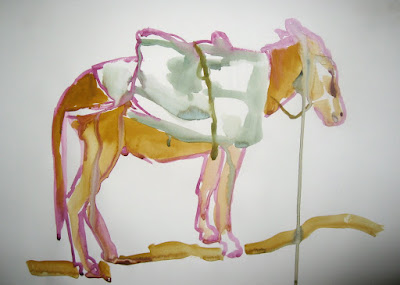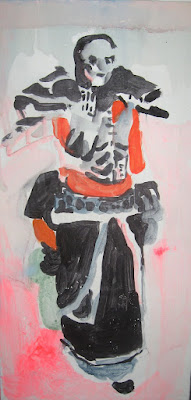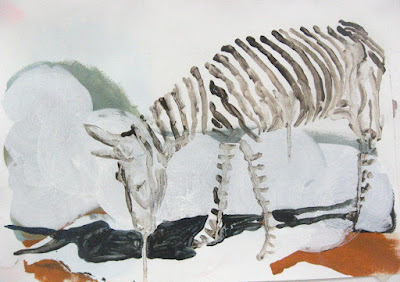
http://anthro.amnh.org/anthropology/databases/photo_jesup.htm
FULL FACE OF INDIAN MAN BY PROF. BOAS

"Franz Boas posing for figure in US Natural History Museum exhibit entitled "Hamats'a coming out of secret room" 1895 or before. Courtesy of National Anthropology Archives.

Concerning the installation of the ethnographic rooms at the American Museum of Natural History… Boas wrote in 1896:
In order to set off such a group to advantage it must be seen from one side only, the view must be through a kind of frame which shuts out the line where the scene ends, the visitor must be in a comparatively dark place while there must be light on the objects and on the background. The only place where such an effect can be had is in the Panorama building where plastic art and painting are made to blend into each other and where everything not germane to the subject is removed from view.
Each display case functioned as an autonomous scene while as a group they produced a sense of sequence, opening the museum space up to the plastic and syntactic resources os scripting and montage well before cinema began to codify them.
Phillipe- Alain Michaud, Aby Warburg and the Image in Motion, Zone 2004, p179



















































